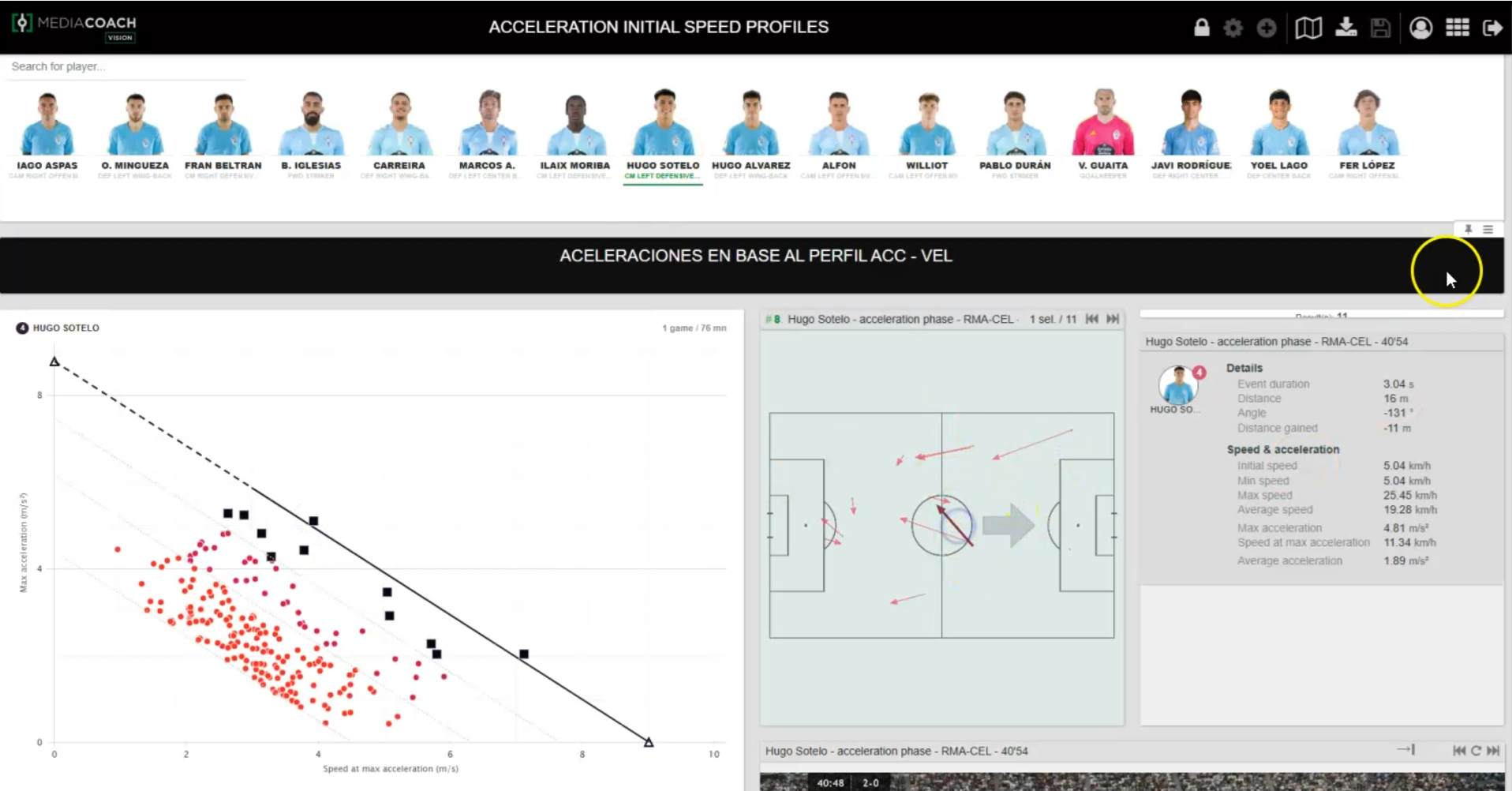
07 May Accelerating from a standstill is not the same as accelerating at full speed. Yet we measure them the same way.
LaLiga challenges one of football’s most ingrained assumptions about how we assess physical performance
For years, coaches, fitness staff, and analysts have relied on the same benchmark: if a player exceeds 3 meters per second squared in an action, that acceleration is considered high-intensity. It’s logged, analyzed, and used to shape training plans. It’s treated as an unquestionable truth.
But… what if it’s not?
At LaLiga’s Football Intelligence department, we decided to put this idea to the test. And we did it with data. More than 8,000 real in-game observations, collected over three full LaLiga seasons (2020–2023), across 363 professional footballers, analyzed action by action with ultra-precise 4K tracking technology.
The goal: to understand how the initial speed at which a player begins a movement affects their ability to accelerate. Because the demands of accelerating from a standstill are very different from accelerating when already sprinting.
A finding with immediate implications: intensity is not just about how fast you accelerate, but where you start from
The results were striking. The relationship between a player’s initial speed (IniS) and their maximum acceleration was almost perfect:
- r = -0.990 for the maximal acceleration-speed profile (MaxAS₀)
- r = -0.946 for the mean profile (MeanAS₀)
In practical terms: the faster a player is moving at the start of a movement, the lower their capacity to accelerate further. Not because they’re tired—but because that’s how physics works.
And yet, most current performance models and even many training plans treat all accelerations the same. If a player hits more than 3 m/s², it’s a “high-intensity” effort. But this study shows that such a rigid threshold ignores a large number of highly demanding actions that don’t quite hit that mark simply because they begin at high speed.
A revealing stat: 90% of “high accelerations” happen at low initial speeds
This is the number that makes you stop and think. More than 90% of the accelerations above 3 m/s² occurred when players were moving at less than 7 km/h.
That means the 3 m/s² rule doesn’t just miss many demanding high-speed actions, but also overvalues low-speed ones. It gets it wrong both ways.
If we use this measure for post-match analysis, we’re likely misunderstanding what’s happening. And if we base training plans on it, we’re conditioning players to the wrong kind of efforts.
Each position tells a different story: football isn’t played in averages
One of the most valuable outputs of the study was the development of acceleration-speed profiles (AS₀) by position. These profiles show how players accelerate depending on their role and the speed they’re already moving at.
The differences were clear:
- Forwards showed the highest theoretical acceleration capacity (A₀) from a standstill.
- Centre backs had the lowest.
- Wingers stood out for maintaining their ability to accelerate even at higher speeds—essential for those explosive, space-consuming runs down the flanks.
These findings suggest that we shouldn’t just rethink how we measure efforts—but how we train for them. A centre back and a winger shouldn’t be doing the same acceleration drills, because their demands are fundamentally different.
Practical takeaways for coaches and fitness staff
1. Monitor accelerations more accurately: stop relying on fixed thresholds
Not everything above 3 m/s² is intense. And many sub-threshold efforts are actually demanding. Use adaptive profiles like Mean75AS₀ (75% of the average AS₀ value by position) to detect real intensity, tailored to game context.
2. Design drills that start at different movement speeds
Sprint from rest? Sprint from a jog? Sprint already at top speed? They all place different demands on the body. Make sure your drills replicate the real acceleration contexts players face in games.
3. Evaluate performance without testing: use live match data
These profiles can be created using tracking data alone—no need for lab tests or extra fieldwork. That means you can monitor players continuously throughout the season, without interfering with the schedule.
A new lens to understand load in elite football
Top-level coaches know this: you can’t train the same way if you don’t play the same way. This LaLiga-backed research offers a new lens to look at accelerations—one that respects the context, the physics, and the player’s role.
Because accelerating from 0 km/h is not the same as accelerating from 25 km/h. And if we keep measuring them the same way, we’re training for a game that doesn’t exist.
Scientific publication
This research has been published in Biology of Sport, an international journal specializing in high-performance sports science.
You can access the full article here:
? https://www.termedia.pl/Acceleration-speed-profiles-in-LaLiga-the-influence-of-initial-r-nrunning-speed-and-differences-between-positional-roles-in-elite-r-nfootball-players,78,56014,1,1.html


